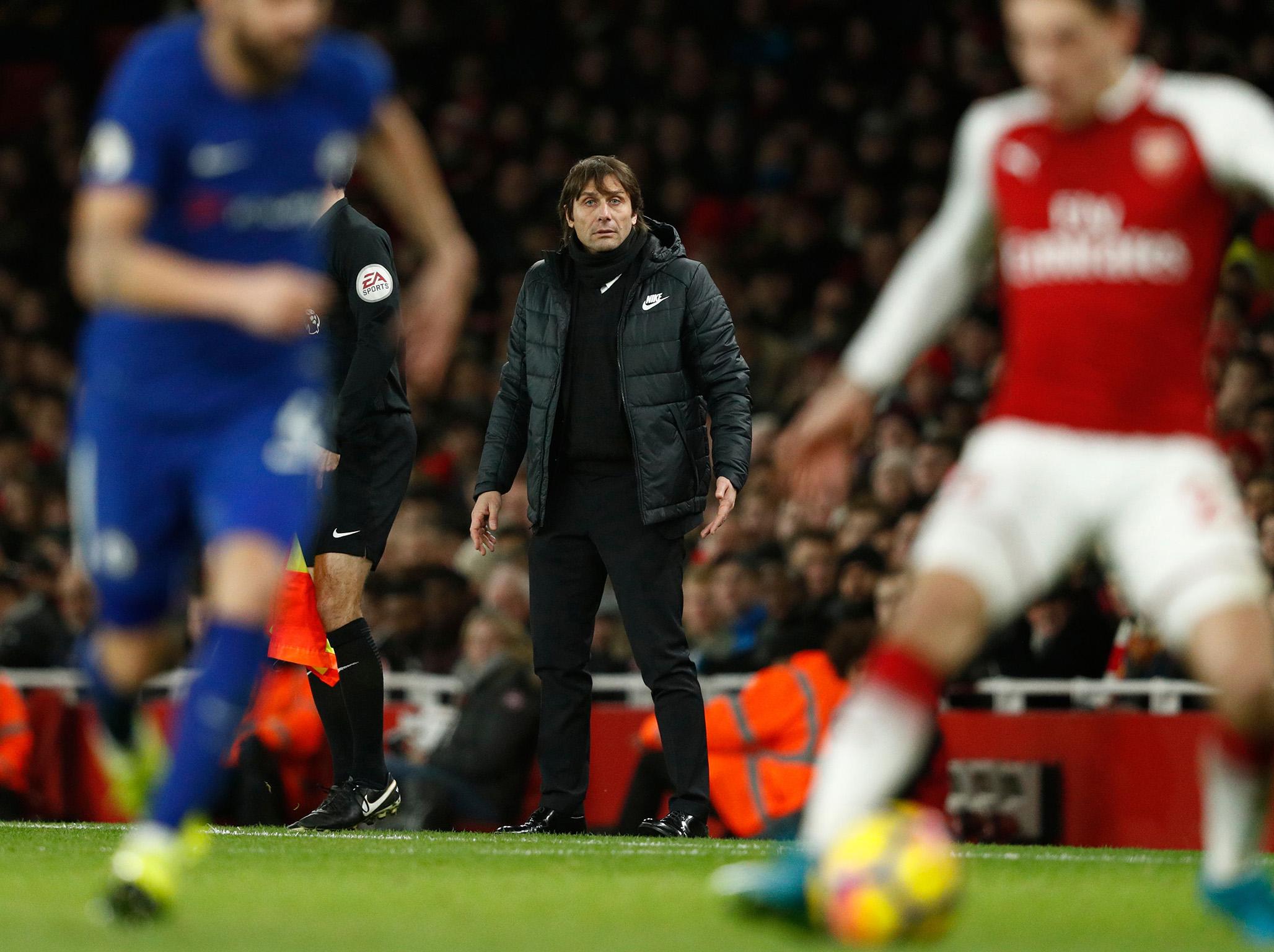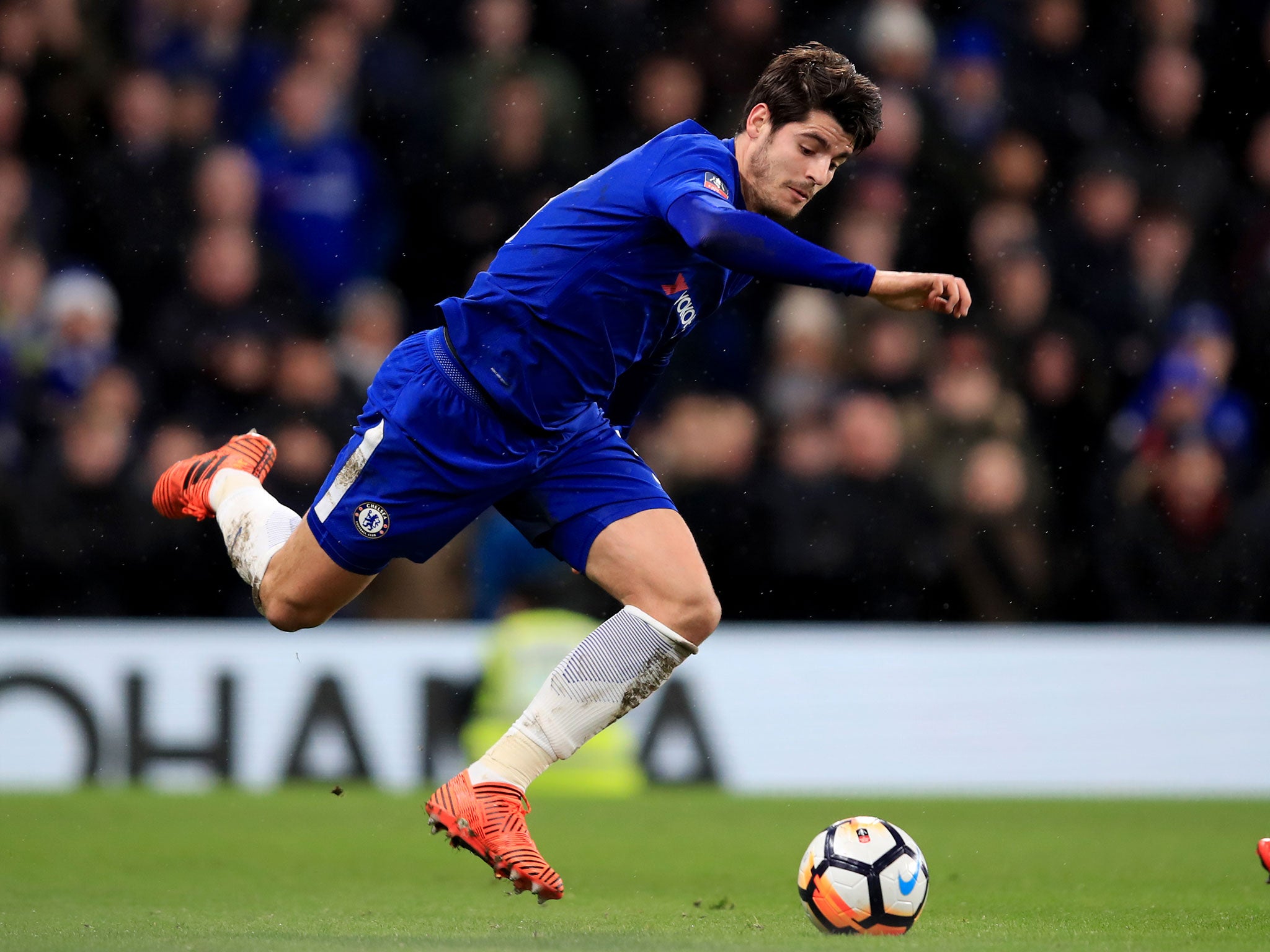Antonio Conte must help Chelsea rediscover their habit of beating Arsenal – but he faces a tactical dilemma
There were two things Chelsea knew how to do better than anyone else. One was winning knockout competitions. The other was winning matches against Arsenal

Ahead of a second leg at the Emirates that could go a long way to deciding how to evaluate Chelsea’s season, you could forgive Antonio Conte second-guessing how to approach it. One big question is whether he goes on the front foot against Arsenal in the way he would idealise as a manager, or sit deep and counter in the way that is proven to be ideal against Arsene Wenger. Should he stay back or go at them?
There are similar questions about Conte himself, of course. Even if he is publicly adamant he wants to remain at Stamford Bridge – although he did conspicuously say “if I stay” in his Tuesday press conference – a lingering fog of uncertainty does foster a certain wonder about what the next step is, that the team is again facing some transition.
Some of this is of course a natural consequence of a wider transition since the last of the old Jose Mourinho player core moved on. “Don’t forget, in the last couple of years, we lost a lot of old players who wrote the history of this club,” Conte himself mentioned. The Italian has done supreme work to restore a focus to the side and go and do what that core made their key trait of winning the league, but he can’t solve everything in such a role and in such a short time. Some of the changes will have longer-term effects.
This specific League Cup fixture actually encapsulates much of this and puts a spin on it. Because, of all the qualities of that old core, there were two things they knew how to do really well and probably better than anyone else. One was winning knockout competitions. The other was winning matches against Arsenal.
In the period between Mourinho’s first departure from Chelsea and Conte’s arrival, that core won six cups and 13 of 20 competitive games against Wenger’s side, only losing four.
To say the champions have forgotten how to do both would be an exaggeration but they are issues that need fixing. Conte has still never won a knockout competition in his career, and his side have only won one of his seven games against Arsenal.
Winning the League Cup is of course dependent on the latter, and some of the latter might be down to a change in Arsenal as much as Chelsea.
So much of that fine record against Wenger was down to the French manager great having what Sir Alex Ferguson described as a “template”. He and Chelsea knew to just sit back, counter and pick Arsenal off.
The way Wenger has set his side up in recent games against Chelsea has not allowed this in the same manner. Arsenal have generally been cagier in defence, and more calculated about their forward pressing.
Chelsea haven’t meanwhile fallen into their natural approach against Arsenal, partly because they don’t have the players with that muscle memory of beating them, and partly because Conte is so much more pragmatic on a broader scale about such things. He changes up so much more.

The question is also complicated by the changes to Chelsea’s attack. Alvaro Morata is out injured for this match but, given his recent form, given his lack of confidence and given how good the attack looked without him against Brighton and Hove Albion when they really broke that duck, the wonder is even whether that is such a bad thing at the moment. It could temporarily suit the champions.
Conte then must decide whether to go with Michy Batshuayi as a straight replacement after his fine performance on Saturday, or instead use Eden Hazard as a false nine. The suggestions from the training ground are that the Italian will decide on the Hazard option. His movement there could prove bewitching for what remains a makeshift Arsenal defence.
Then there’s that issue of wether Chelsea push up so far against them.
That entire selection decision has also fed in to another big decision to be made as regards the market. If Chelsea do sign 31-year-old Edin Dzeko from Roma, it would be a badly-needed addition up front, but also break a long-standing guideline as regards both transfers and contracts. The Stamford Bridge hierarchy have in recent times only offered one-year deals to existing players over the age of 30 but, even aside that, the Bosnian would be the first player of that age profile they have paid money for since 2013.
The last, Samuel Eto’o, was also bought for a mere £2m and he was actually only the second since 2010 after £5.5m Yossi Benayoun, when this policy really came in properly. The only other players over the age of 30 they have signed in that time have been free or evidently short-term deals, usually for back-up goalkeepers: Didier Drogba, Mark Schwarzer, Marco Amelia and now Willy Caballero.
Any contract to Dzeko could thereby create issues for other plus-30-year-olds in the squad given the previous stance, but then it has been something of an issue for Conte too. The Italian has wanted to bring in more experience, but Chelsea have instead prioritised the signing of younger players to get ahead of the game, just as Real Madrid have done with purchases like Marco Asensio.
That itself does further illustrate what Conte has been arguing about a “changed situation” and “new reality” for the club. Sources similarly say Chelsea are now much more reluctant to pay high fees, as recent business generally proves.
This is the ongoing transition, and why there is understandable wonder about the next steps.
A semi-final second leg is at least a lot clearer, and could make everything else so much clearer. The next step is the final. Conte just has to make a few decisions on how to get there.
Join our commenting forum
Join thought-provoking conversations, follow other Independent readers and see their replies
Comments